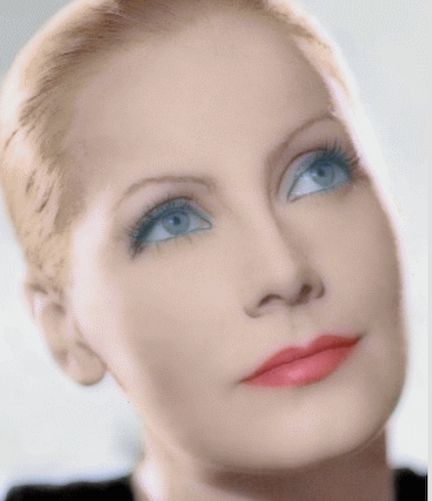On this date in 1905, enigmatic Swedish actress Greta Garbo (née Greta Lovisa Gustafsson) was born in Stockholm to working-class parents Anna (Johansson) and Karl Gustafsson. She was christened the next day by a Church of Sweden pastor.
The family’s financial struggles worsened with her father’s death when Garbo was 14. She left school, where she wasn’t a particularly good student but was interested in theater despite her shyness, to work as a “soap girl” applying lather to men’s faces before the barber shaved them.
A department store job led to work as a model, studies at the Royal Dramatic Training Academy and recruitment in 1924 by the Finnish director Mauritz Stiller to play a secondary part in his silent film “The Saga of Gösta Berling,” in which she falls for Berling, a Lutheran priest defrocked over his fondness for alcohol. Stiller convinced her to change her name to Garbo.
The movie led to other roles, and during a visit to Berlin, Louis B. Mayer of Metro-Goldwyn-Mayer Studios met her. She and Stiller signed with MGM and in 1925 boarded a ship to America, Garbo with the inability to speak English. Her first American film was “Torrent” in 1926, the year her actress sister Alva died of tuberculosis in Sweden. Some thought her beauty exceeded Garbo’s.
Her next films catapulted her to international stardom: “The Temptress” (1926), “Flesh and the Devil” (1927), “A Woman of Affairs,” “The Mysterious Lady” (1928) and “Wild Orchids” and “The Kiss” (1929). “Anna Christie” (1930) was her first sound film. MGM marketed it with the tagline “Garbo talks!” and the film led to the first of her three Oscar nominations, all unsuccessful.
Garbo made 13 more movies from then until 1941, when “Two-Faced Woman,” widely panned and directed by George Cukor, was her last at age 35. In between notably were “Mata Hari,” “Grand Hotel,” Somerset Maugham‘s “The Painted Veil,” “Anna Karenina,” “Camille” and the comedy “Ninotchka.”
Many critics and film historians consider her role as the doomed courtesan Marguerite Gautier in “Camille” (1936) as her finest performance. “Grand Hotel” (1932) was the source of the line most associated with her name: “I want to be alone.” She later clarified that with “I never said ‘I want to be alone.’ I only said ‘I want to be left alone.’ There is all the difference.” She once told the actor David Niven that she’d quit because she had “made enough faces.”
In his biography “Garbo” (2021), Robert Gottlieb wrote that she had never liked the limelight and lacked the relentless drive of contemporaries like Marlene Dietrich. “She doesn’t seem to have been particularly vain about her beauty, but she was practical enough to know its precise value, and to anticipate the cost of its fading.”
Garbo never married and never had children but did have relationships, publicly with several men, and perhaps privately with a few women. Regarding religion, Gottlieb wrote: “As for Garbo and church, I haven’t come upon any references to her ever attending one, although perhaps she was tempted by [singer] Jessica Dragonette’s Catholicism — if so, it didn’t take.” Lilli Palmer, a German-born actress married to Rex Harrison, wrote in her 1975 autobiography: “Her daily walks were her religion; she withered when she was deprived of them.”
After quitting the movies, she moved to New York City, traveled frequently abroad with friends and compiled an estate of at least $32 million by investing in art, real estate and securities. She became a U.S. citizen in 1951 and died of renal failure and pneumonia at age 84. She was cremated in Manhattan with her ashes interred in Stockholm. (D. 1990)


